A strut bar is a stiff metal bar that connects your front and/or rear strut towers with the purpose of adding more rigidity to your car. Its effectiveness, however, all comes down to your car.
We’ve seen strut bars make a big difference on older cars that are prone to chassis flex and/or body roll issues. While others are more like a non-functional cosmetic upgrade – all for show with no real benefit to handling.
Read on as we dive deep into the mechanics of strut bars, what they do, along with their pros and cons.
The Strut Bar Explained
A strut bar also called a strut brace or strut tower brace is a connecting rod that laterally (from left to right) links your suspension strut towers. This reinforces your chassis by tying these two stress points together.
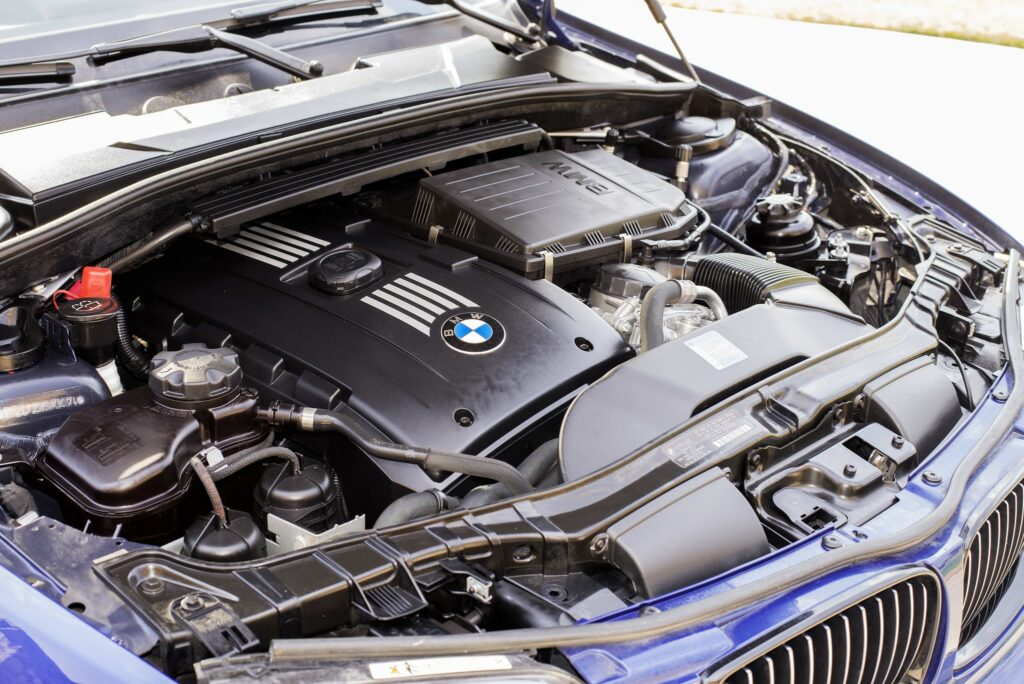
You’re probably wondering “what are strut bars for?” Well, strut bars were primarily designed to overcome limitations of the MacPherson Strut type suspension system. However, this doesn’t mean that cars with other types of suspension setups cannot benefit from strut bars.
Unlike double wishbone type suspension systems, MacPherson Strut assemblies are load-bearing on the top — where they’re connected to the body of your car.
Because of this design, your strut tower undergoes extreme pressure while hard cornering or if you hit a bump at high speeds. This pressure is enough to offset and temporarily change the alignment of your car’s suspension geometry, making your car unpredictable in tight situations. Installing a strut bar helps to counteract this effect.
How Does a Strut Bar Improve Handling?
There has always been an interesting contrast between handling and performance. Handling refers to how the car feels and how stable it is, while performance has more to do with speed and acceleration. Generally, cars that handle well are easier to manage at high speeds.
The main purpose of a strut bar is to make your car easier to handle when being driven hard.
Strut bars won’t necessarily increase your cornering speed or lap times. Instead, they’ll make your car more playful and predictable when cornering at speed.
This is the result of the strut brace redistributing excess pressure from one strut tower to the other. This significantly reduces chassis flex through tight corners and helps to keep your steering stable even at high speeds.
Installing strut bars increases the overall rigidity of your car. Because of this, your chassis doesn’t flex when you hit a bump or if you’re turning hard into a sharp corner.
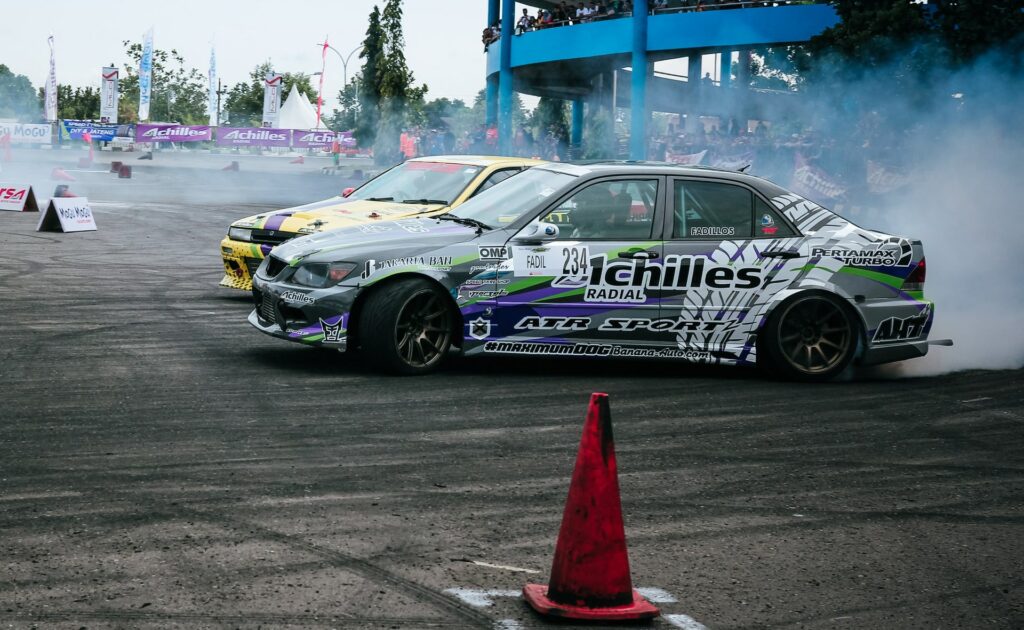
Front vs Rear Strut Bars
Most enthusiasts claim that you need to be an experienced driver to notice the real difference that front and/or rear strut braces make.
To maximize the effectiveness of your strut braces, you need to combine them with aftermarket bushings and ball joints. Add a pair of aftermarket sway bars to that list and you’ll dramatically change the handling of your car.
Strut braces can be installed either on the front or rear strut towers. Stiffening up the front end of your car will increase understeer, doing the same for the rear end will increase oversteer, including snap oversteer. However, this heavily depends on the current handling characteristics of your car.
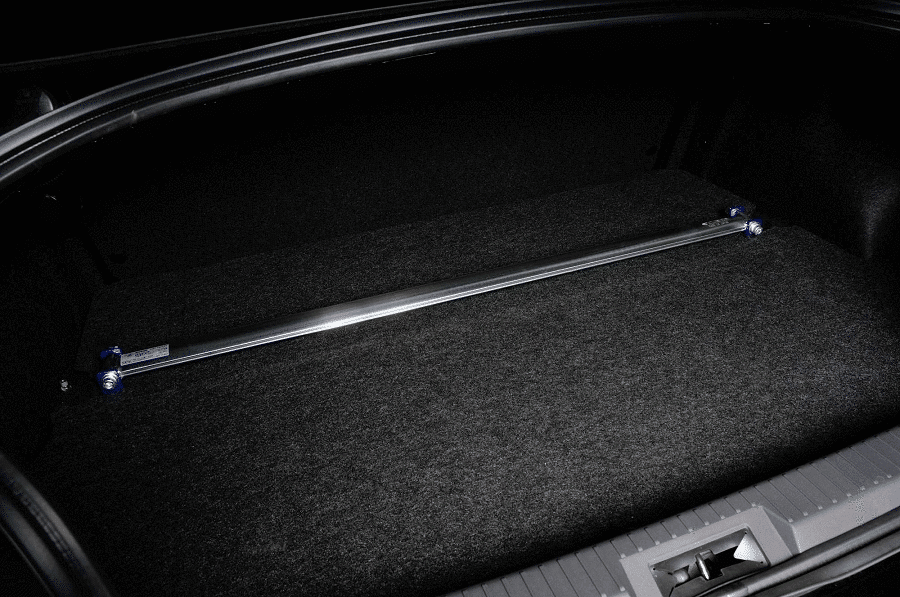
You can either install both or just one, depending on what you’re trying to set your car up for.
Strut Bar Pros & Cons
Just like every other car modification, strut bars come with a few advantages and disadvantages. We can’t conclude whether strut bars are either good or bad because this depends on the driver and car in question.
Either way, they’re a really interesting little upgrade and will make a nice addition to your list of mods. Here’s what makes strut bars great and what doesn’t.
Strut Bar Advantages
Stiffer Chassis
We cannot deny the fact that some cars really do benefit from strut bars. These include old, light-weight cars that are known for having body-roll and sway related problems.
If your car is new-ish and doesn’t have any stiffness related issues, you won’t benefit from installing strut bars.
Reduced Wear and Tear
Strut bars redistribute tension between the left and right strut towers. All the force and pressure that is generated while driving gets shared evenly across your chassis.
Because of this, the wear and tear associated with this pressure also get redistributed. Even wear is always a good thing.
Under-Hood Bling
Let’s face it, many enthusiasts install a strut bar because it makes their engine bay look great — and that’s okay. As long as the mod has some function and doesn’t take anything away from your driving experience, it is worth installing.
Tastefully painted or anodized strut bars look fantastic!
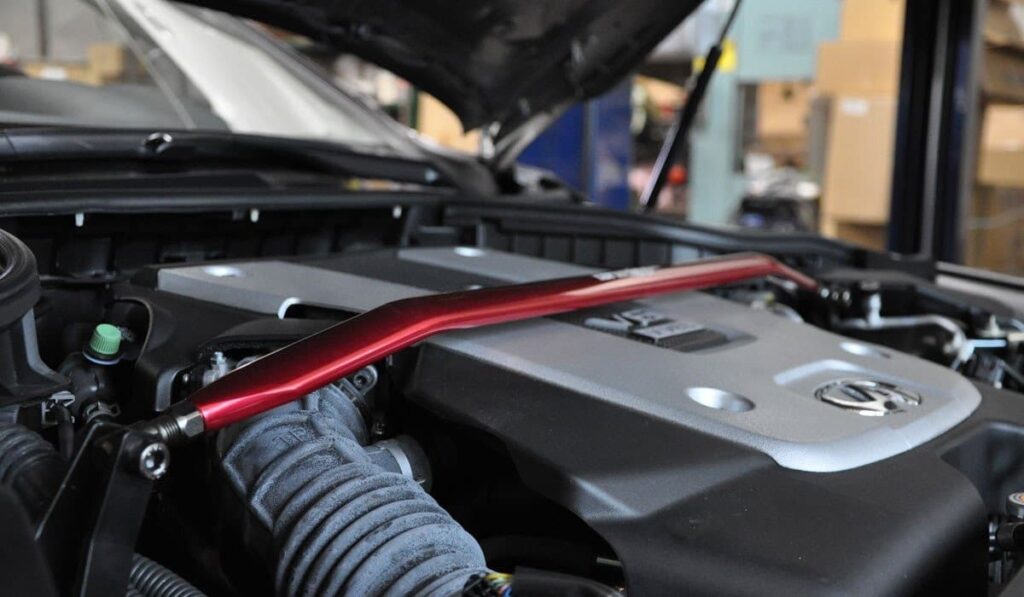
Easy to Install
Installing strut bars by yourself is a piece of cake as long as you’ve purchased the correct unit. Because they’re all made specifically for each application, you won’t have to whip out the drill machine or any cutting tools. A simple socket set is usually all you need to get the job done.
This installation can be done in your driveway, without needing to jack your car up. Simply clean up the strut tower area and unscrew the existing nuts. You’re going to have to use the same bolts to fit your new strut bar.
Before bolting on the strut bar, check if there’s enough clearance with the hood. Once done, simply bolt it on without over-tightening the nuts and you’re all set.
Affordable
Strut braces range from under $100, all the way to three digits. Which one to purchase is entirely up to you.
Cheaper strut bars are just as good as the expensive ones, as long as you choose your design and construction carefully.
Strut Bar Disadvantages
Off-Road Performance Takes a Hit
In some cases, your suspension needs to function independently. Especially if off-road stability is important for you.
For example, if you have a strut brace installed, and your front left wheel hits a bump, this effect will also be felt on the front right wheel. The same problem occurs with sway bars too.
This isn’t ideal when it comes to driving off-road. You could lose traction when you need it the most and your ride will be uncomfortable.
Makes No Straight-Line Difference
Strut braces can only be taken advantage of when going around corners or while steering over uneven surfaces.
If you’re driving in a straight line or racing at a drag strip, your strut bar won’t make a difference.
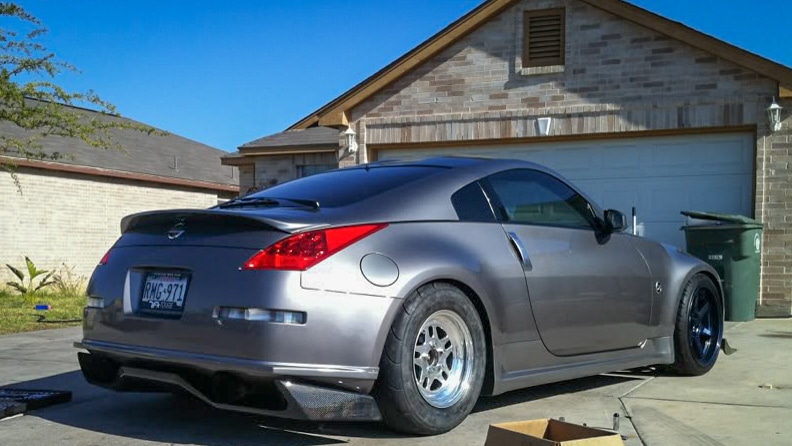
Occupies Engine Bay Space
Your strut bar shouldn’t block any important access points such as your or battery.
Make sure that your hood doesn’t hit the strut bar when it’s shut. In some cases you may need to adjust the height of your hood after installing a strut brace, so research each product thoroughly before buying.
Form Over Function
We love modifications that look great and actually serve a purpose. That said, strut bars aren’t a “cosmetic only” mod by any means. They do serve a purpose but most people install them for the looks.
We consider strut bars to be 25% function and 75% form. It really depends on what you’re trying to accomplish.
If you’re expecting a drastic change in the way your car handles after installing strut bars, you’ll probably be disappointed.
Strut Bar Construction
Whether or not a strut bar does what its supposed to also depends on its construction. If it flexes more than your chassis does, it won’t be of much use.
Some of the cheaper strut bars come with brackets that get bolted on to your strut tower first, then the bar gets fitted on to these brackets (which tend to break). This is the design you must avoid because your strut bar is only as strong as its weakest point.
When it comes to material selection, steel is your best option. If you’re going for an aluminum strut bar to save weight, make sure it’s bulky and strong enough to actually work without flexing.
You must’ve noticed how steel has always been the metal of choice for building roll cages and frames. This is done for a good reason; the combination of affordability, high-tensile strength and rigidity makes steel the preferred material for making parts that are going to undergo a lot of stress.
Do Strut Tower Braces Work?
Whether or not a strut bar will work for you really depends on what car you drive. Not all cars need or even benefit from these.
Quite honestly, if this is going to be your first modification, we recommend purchasing a rear sway bar first; especially if better handling is what you’re after.
These days, most modern cars are quite torsionally rigid and don’t require any additional reinforcement. Adding a strut brace to these cars won’t really make a difference. It’s the old ones that can really benefit from this upgrade.
What’s your take on strut bars? Do you think it is worth installing them? Leave us a comment below!
Feature Image: Cusco Strut Tower Brace, and Angle Support system, with, Brake Master Cylinder Stopper, and Oil Catch Tank by Moto Miwa, modified by Low Offset, CC BY 2.0
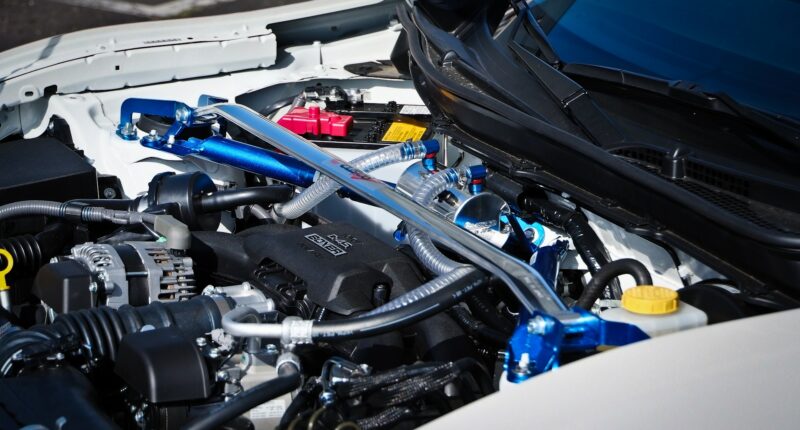
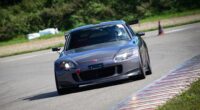
10 comments
I don’t think the bushing at the upper strut mount can take much lateral force, it has a lot of leverage to counteract the moment from the corning forces. As such the strut brace can’t really make much difference.
I am going to install a strut bar to reduce body roll – and for the look
A strut bar will NOT reduce body roll
I might add a specific case. Not pure cosmetics, but still not stiffing the body. The Citroen C4 Phase 1 has a rather weak grill between the windshield and engine hood / bay, so a bit of support from underneath would surely extend its life. And even the worst one on the market can still fit this purpose (though the “strut bar” term might not be the most appropriate one…)
There might be other cars as well with this “loose grill” issue.
Is it worth while to install a rear and front strut bar on a Caddy MK1 Bakkie? I am curious for advice.
At the risk of “it has to work because I spent money on it”, I think the Speedlogix front strut on my Challenger makes turn-in feel a little crisper. Not a huge difference, but a step in the right direction for transient handling.
They do work, BUT NOT on a Double Wish Bone Suspension, as this type already takes care of lateral forces. They work best on McPherson Strut type towers.
However, if you drive your car NON aggressively you won’t really see any change.
These modifications are meant to reduce body roll from aggressive driving into corners at high speeds.
I just had a 3 point front and rear one put on my widebody Challenger. I noticed a difference and can hear an occasional creek noise that confirms that the body flexes.
I have Mazda 6 2018 model, is it worth to install front strut bar?
For the naysayers, they need to read what the author said. Some cars will really benefit from this. I have a 90’s era Mustang GT and it had a significant affect in many ways. These cars are known for massive body flex and greatly benefit from this upgrade in terms of adding rigidity. In my own experience I had the front bar added first and it eliminated what Mustang enthusiasts knows as cowl shake, it’s far worse in convertibles, but still present on Fox Body and SN-95 coupes. In terms of handling it’s hard for me to say because I added aftermarket sway bars with poly bushings at the same time and the two made a significant difference in how the car felt. The body roll was gone and it inspired an amateur like me to enjoy pushing my car in turns harder. It ignited an interest to look into the SCCA.
I added the rear bar a month later and it had a significant impact. I have owned this car from new and on day one when pulling out you could always feel a flex in the rear along with some noises. After installing the bar this was gone for the first time in the 23 years I owned the car.
I’m sure it had little impact into the ultimate cornering performance of the car if it were in the hands of a professional. However, it made the car feel tighter and inspired confidence in an amateur like myself. I’m sure that if I had ran lap times before and after these mods my times would be down significantly due to how much better it made the car feel to me. So I think for amateur drivers they have a significant benefit. As I said before I’m sure in the hands of a pro they would make little difference as they would be able to push the limits regardless. I can’t overstate how much better they make a car with a notoriously flexible chassis like 79-2004 Mustangs.